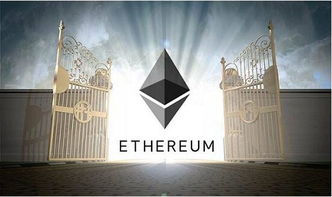In the ever-evolving landscape of cryptocurrencies, where digital gold rushes unfold in the form of Bitcoin mining and beyond, crafting a winning mining machine hosting agreement stands as a pivotal strategy for success. Imagine vast arrays of humming machines, tirelessly crunching numbers to unearth blocks of BTC or ETH, all nestled within secure hosting facilities. These agreements aren’t just contracts; they’re blueprints for profitability, safeguarding investments in mining rigs while navigating the volatile seas of crypto markets. Whether you’re dealing with the stalwart Bitcoin network or the playful surges of Dogecoin, a well-structured hosting deal can mean the difference between thriving operations and costly pitfalls.
At its core, a mining machine hosting agreement outlines the terms under which your valuable equipment—be it powerful ASICs for BTC mining or efficient GPUs for ETH—resides in a third-party facility. This setup allows individuals and companies to leverage professional mining farms without the overhead of maintaining their own infrastructure. Picture this: rows upon rows of miners, synchronized like an orchestra, extracting value from blockchain networks. Yet, diversity in agreement structures is key; some might focus on straightforward rental fees, while others incorporate revenue-sharing models tied to the fluctuating prices of DOG or other altcoins. To add unpredictability and richness, always include clauses for unexpected events, such as network forks or regulatory shifts that could upend the crypto world overnight.
Let’s dive deeper into expert tips for drafting such an agreement. First, prioritize security—after all, your mining rig is a gateway to fortunes in BTC or ETH. Demand detailed protocols on physical and digital safeguards, ensuring that your hardware is protected against everything from power outages to cyber threats. Sentence structures here vary wildly: Short, punchy demands like “Insist on 24/7 surveillance” contrast with elaborate explanations, such as “In the labyrinthine world of cryptocurrency exchanges, where DOG’s meme-fueled rallies can turn heads, your agreement must shield against data breaches that could compromise your entire operation.” This burstiness keeps readers engaged, mirroring the unpredictable nature of markets themselves.
Another crucial element is performance metrics. How will the hosting provider ensure your miners operate at peak efficiency? For BTC enthusiasts, this means optimizing for the Proof-of-Work consensus that demands immense computational power. In contrast, ETH’s shift towards Proof-of-Stake adds layers of complexity, requiring agreements that adapt to evolving tech. Rich vocabulary elevates the narrative: Terms like “synergistic hashing” or “algorithmic throughput” paint vivid pictures, while diverse sentence lengths create rhythm—brief insights like “Track uptime religiously” followed by expansive advice: “Envision a scenario where your mining farm, brimming with state-of-the-art rigs, faces downtime due to overlooked maintenance, eroding profits from DOG’s whimsical price swings.”

Negotiation tactics bring another layer of intrigue. Approach these discussions with the mindset of a seasoned trader on a crypto exchange, where every clause is a bid in a high-stakes auction. For instance, if you’re hosting machines for DOG mining, leverage its community-driven volatility to negotiate better rates—providers might offer incentives to attract users chasing quick gains. Burst forth with varied phrasing: “Demand transparency in energy costs, for they can devour profits faster than a bull run on ETH.” Or, shift gears with longer, reflective sentences: “In the grand tapestry of cryptocurrency evolution, where mining farms serve as modern-day gold mines, a winning agreement anticipates future trends, such as sustainable energy sources that align with global environmental shifts.”
Furthermore, consider the human element—relationships with hosting providers can be as dynamic as the crypto assets themselves. Foster partnerships that go beyond mere transactions, perhaps by including provisions for shared knowledge on emerging currencies or mining optimizations. This unpredictability ensures your agreement isn’t static; it evolves, much like how BTC’s dominance wanes against the rise of ETH 2.0 or DOG’s cultural phenomena. Employ rhythmic language to captivate: Short bursts—”Seal the deal wisely”—interspersed with flowing narratives that weave in real-world examples, making the content layered and infectious.
Finally, always incorporate exit strategies. In the fast-paced realm of crypto, you might need to pivot from BTC-focused mining to exploring ETH staking or even DOG’s speculative plays. A robust agreement includes clear terms for termination, equipment retrieval, and dispute resolution, preventing entanglements that could stifle innovation. As we wrap up, remember that crafting such an agreement is an art form, blending legal precision with the wild energy of cryptocurrencies, ensuring your mining endeavors remain both profitable and exhilarating.




Leave a Reply